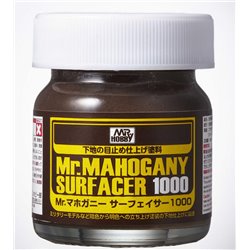Kadee couplings are a popular choice for railway modellers, particularly those modelling in HO and OO gauge....
No products
Product successfully added to your shopping cart
There are 0 items in your cart. There is 1 item in your cart.
Search Tips
What is the difference between a primer and a surfacer?
There are a large number of painting products on the market, each one claiming to be ideal in a particular situation. As such, this can sometimes create confusion as to which product is most suitable in a particular situation. One area of confusion is the difference between primer and surfacer.
A primer is used specifically to prepare a surface for subsequent paint coats. It provides a surface which is easier for subsequent paint layers to adhere to making the overall finish look smooth and level. It also means that the model in question is one colour and as such any subsequent coats of paint will have a consistent colour.
A surfacer is slightly different from a primer. The slightly different mixture and consistency of a surfacer means that it can be used not only as a primer but it can also act as a fine filler by filling in scratches, minor surface abrasions and some seams, thus providing a more uniform surface for additional coats of paint. Most manufacturers will provide a variety of surfacers, some finer than others so that a modeller can match the surfacer required to the complexity of the surface to be covered.
Whilst flexible enough to deal with an irregular surface they are also quick drying, this allows a modeller to easily assess the effectiveness of any surface filling. This rewards the slow and measured approach of using a build-up of light coats to achieve optimal results, whilst still being robust enough to be sanded and polished if necessary in order to achieve the desired finish.
Click here to receive the tips weekly in your mailbox. You can unsubscribe at any time.



.jpg)






